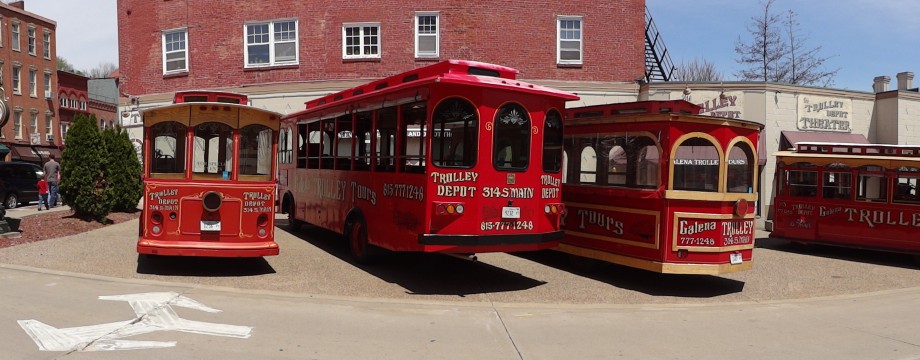A visit to Galena is truly like stepping back in time. Fully eighty-five percent of Galena’s buildings are in a National Register Historic District. Even the scenic beauty of the surrounding hills and valleys is a testament to being untouched by time.
The Glaciers that flattened most of North America during the ice age did not encroach on Northwestern Illinois and the immediate areas to the north and west. Consequently the hills, valleys and bluffs in this Mississippi River Valley area remain intact making it one of the most scenic areas in the Midwest.
Also intact were the rich lead deposits that were first mined by the Sac and Fox Indians. In the late 1600’s the French established trading posts in the area. By the early 1800’s the Upper Mississippi Lead Mine District was established by the U.S. Congress, which paved the way for what would become the industry that gave birth to the City of Galena.
In 1826, Galena, which is the technical term for sulphide of lead, organized as a town. The John Dowling House, built that same year stands today in our Downtown Historic District and is open to visitors. The population would continue to swell as prospectors received grants to temporarily occupy and mine lead on improved lots in the area. By 1834, the Galena Gazette was established as a daily newspaper. The Galena Chamber of Commerce was established in 1838 and the town was chartered as a city in 1841.
Of equal importance to the city’s growth was access to shipping along the Mississippi River from the Galena River. By the 1850’s Galena was the busiest port between St. Paul and St. Louis often boasting as many as fifteen steamboats at a time docked along Water Street. In 1845 Galena shipped a record 54,494,850 pounds of lead. The population was now 14,000 and the Galena Branch of the Illinois Central Railroad was completed connecting Galena to Freeport, Illinois.
This growth gave birth to the DeSoto House Hotel, which operates as a full service hotel today, numerous churches with spectacular architecture, banks, dry good stores and the beautiful mansions and stately homes that can be seen today along Prospect Street and on the east side of Galena. Gaslights lined the streets and the Marine Hospital was completed along the Galena River.
Galena’s political history is among the most significant in the State of Illinois. Abraham Lincoln and Stephen A. Douglas both spoke from the balcony of the DeSoto House Hotel. In 1860, Ulysses S. Grant came to Galena from the St. Louis area to work in his father’s leather goods store where he would meet many politically influential friends and subsequently be name a General in the Civil War.
General Grant left for the civil war from the home he occupied on High Street which still stands today. Upon his triumphant return from the Civil War in 1865 a group of citizens presented his family with a fine, fully furnished home on Bouthillier Street as a token of their gratitude. The Grant Home is now a state historic site open to the public. He awaited the results of his successful run for the Presidency in the home of Elihu Washburne which is also a state historic site open for viewing. He became the 18th President of the United States.
With the decline of the lead mining industry and the start of the California Gold Rush, the population of Galena began to decline and stands at approximately 3,600 today. Although many of the people left, the legacy that remains is a city rich in architectural beauty and history. A history so intact still today, that we are often referred to as the town that time forgot.

